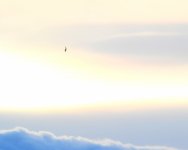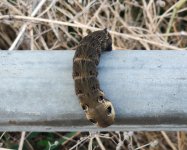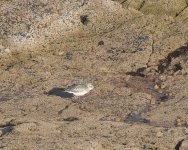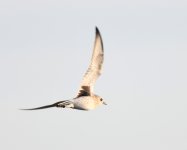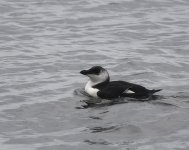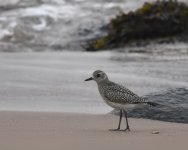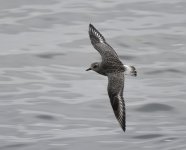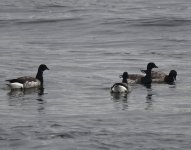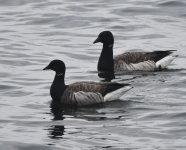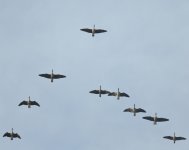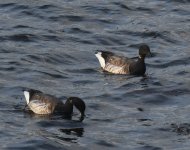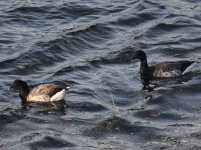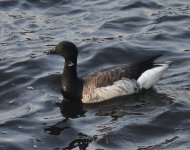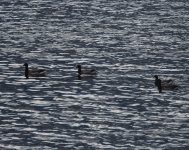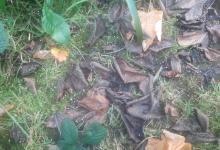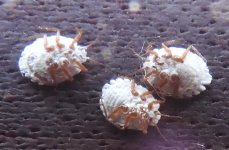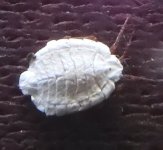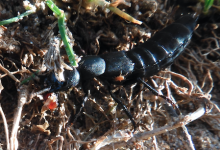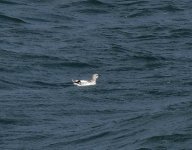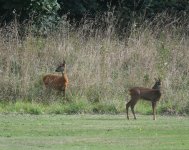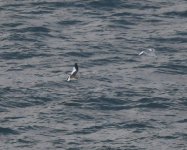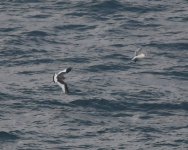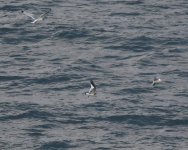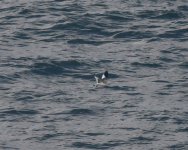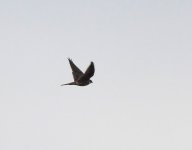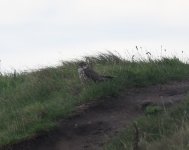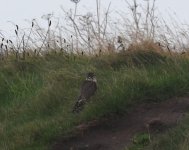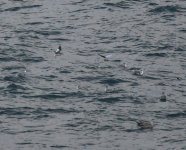This was the day 'IT' finally happened...
It's been pretty rainy here today and it only brightened up somewhat by late afternoon. I headed out around the headland thinking that the bad weather would have done something interesting, but I wasn't sure quite what. A Chiffchaff and a Blackcap along Abbey Road suggested there might be migrants about but, apart from a Wheatear, I didn't find any. A couple of Dunlin were the best of the waders. Once again I saw a Merlin, in fact on two occasions. The first time it was heading over the sea beyond the North Pier before skimming low up Aberdeen beach. Presumably the same bird then flew right over my head and landed on the ground by rough path near the breakwater. It sat there for several minutes, giving perhaps the best views I've ever had of one here, before dashing off over Greyhope Bay.
The sea has often been the place to be for birds recently. There didn't seem to be too much moving initially but a group of Kittiwakes was feeding just offshore. I started scanning through them and soon noticed a couple of adult Little Gulls and a Common Tern. I then got onto another bird that, for a split second, I thought might have been a juvenile Little Gull. Then it turned and showed a striking grey, black and white wing pattern and I nearly screamed. Sabine's Gull is a good bird but one that occurs somewhat regularly in Britain. There are maybe four records from Girdle Ness in recent years. But I didn't see any of those and, perhaps surprisingly, I've never seen one anywhere. Not even on my travels around the world. It's almost comical how I've avoided them over the years. But, this one was here and front of me and totally real. It was a juvenile and quite lovely - very small and dainty, somewhere between Little Gull and Kittiwake in size. It fluttered about elegantly as it fed and sometimes rested on the water where it looked quite dark. After a bit, it settled more permanently among the Kittiwakes and looked as though it planned to roost on the sea with them, a few hundred metres southeast of the foghorn. It's probably still there now.
I was a bit distracted from anything else that might have been moving, but other stuff I noticed included an Arctic Skua, seven Arctic Terns, two Sandwich Terns, 11 Teal, a Red-breasted Merganser and twelve Red-throated Divers.





